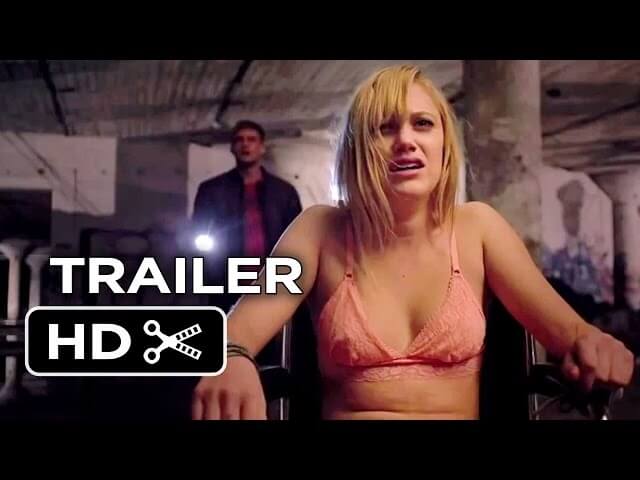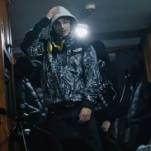How to make a good horror movie: 9 lessons from the genre’s latest triumphs

Horror never goes out of fashion. Trends may shift, box-office prospects may vary, and crazes may come and go, but there’s always a market for films designed to scare the bejeezus out of people. That said, the genre has had its artistic low and high periods—and right now, we’re living through the latter, a quiet horror renaissance. With the excellent It Follows opening this week, we’ve singled out nine highlights of the last three years, identifying the lessons that could be taken from each. In other words, let’s keep this winning streak going, young horror hopefuls.
1. Use space and technique to your advantage (It Follows)
Horror, like action, is a genre that relies heavily on the manipulation of formal elements—the control of perspective, for example, or the way editing can be used to create stretches of pregnant tension or sudden, expertly timed jolts. So why are so many modern horror films so perfunctorily directed, their makers relying on a tired collection of old shock tactics? (So help us Lucifer if we see one more shot of a person standing in front of a mirror, ducking out of sight, and returning to find the monster waiting for them in the reflection.) It Follows, which begins creeping and crawling into U.S. theaters this Friday, is an exception to that trend. Working with a gloriously simple premise—a specter that relentlessly pursues its target, always taking the form of a person—director David Robert Mitchell frequently uses space and composition to elicit dread. Oftentimes that means employing deep focus photography, so the background of each shot becomes a source of suspense. Mitchell will also draw the audience’s eyes to an approaching figure in the distance, creating unease from what we can see but the characters can’t. Even off-screen space becomes a danger zone, the great unknown from which something awful might emerge. It’s a master class in terror through technique. [A.A. Dowd]
2. Gamble on performance (The Babadook)
For a genre that relies so heavily on audience identification, horror tends to be indifferent to acting, at least as far as protagonists—too often it’s just “pretty people looking scared”—are concerned. It’s not as though the world has a shortage of good actors; it’s that staking scares on performances rather than effects always involves an element of risk. Jennifer Kent’s much ballyhooed first feature, The Babadook, could have easily skirted by on the otherworldly creepiness of its premise, which makes it all the more impressive that Kent gambles so much of the movie on Essie Davis’ performance as Amelia, a widowed nursing home orderly who is being tormented by a storybook monster. Kent actually began her career as an actor—she studied at Australia’s National Institute Of Dramatic Art, where her classmates included Davis and Cate Blanchett—and her directorial debut is a surefooted example of a movie that maintains a strong sense of style while leaving room for performance, giving the horror a human dimension that makes it stick all the harder. [Ignatiy Vishnevetsky]
3. Relocate to an interesting time or place (The Witch)
There isn’t much point in trying to come up with a wholly original idea for a new horror film; by now, just about every species of monster imaginable has been unleashed on audiences. But if the well of what has been drained dry, there’s still plenty of room to play with the where and the when. The intense Sundance period piece The Witch gains much of its spooky power from its precise sense of time and place. Set in the backward backwoods of 17th-century New England, the film subjects a family of exiled pilgrims to lots of supernatural torments, some of which have been borrowed from other unholy thrillers. By placing these old tropes in an even older world—one archaic in speech, dress, and philosophy—director Robert Eggers somehow makes them feel new again. It’s the familiar becoming chillingly unfamiliar; the principle could be applied to any number of untapped backdrops. In other words, even a cabin in the woods can look scary again, depending on the decade or region it occupies. [A.A. Dowd]
4. Borrow whatever you need (Resolution)
On the other hand, if all horror premises have been exhausted, maybe the solution is just to embrace the familiarity. When faced with your list of horrifying possibilities, why not check “All of the above?” That was the decision arrived upon by Resolution, one of the most thought-provoking and inventive horror films of the past several years. When a man locks up his former best friend in an effort to force him through withdrawal from meth addiction, things quickly get weird… until they don’t. In rapid-fire succession, our protagonist encounters some oddball religious types, Native Americans warning him of the dangers of the land, a box of old photographs, an eerie scientist, and more—all of whom would make for a perfectly acceptable evil in a normal horror film. But Resolution refuses to engage in any such straightforward way, and in so doing, turns using everything and the kitchen sink into a kind of masterstroke. Rather than avoiding what’s been done before, the movie works it all in—and unlike Cabin In The Woods, there’s no ready explanation. Resolution has everything but. [Alex McCown]








































